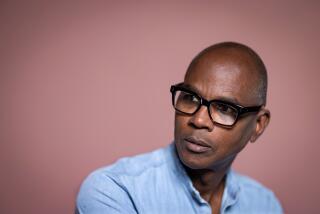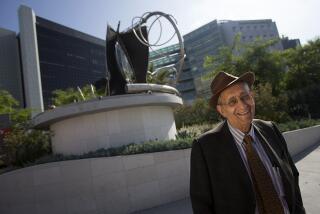Maud Morgan, 96; Eclectic Artist
Maud Morgan exhibited alongside Jackson Pollock and Mark Rothko, two giants of Abstract Expressionism. She mentored Frank Stella, buying one of his first paintings when he was 18.
But her own brilliant career went largely unsung during her lifetime. At her death Sunday in Cambridge, Mass., at the age of 96, the woman who was called Boston’s modernist doyenne left eight decades of wide-ranging works, from still lifes to abstractions and self-portraits in watercolor, oils and the medium she favored in her 90s, collage.
Morgan, who died of complications resulting from pneumonia, led an exotic life. She was a New York Cabot whose eccentric mother forced her to spend a year as a debutante and, because Maud Bonner Cabot was a big-game hunter, required her to shoot a moose.
Morgan complied with her mother’s wishes. But soon afterward, she escaped her aristocratic bonds and fled to Paris for art studies. She traveled to Russia to observe communism firsthand. She went to India, where she met Gandhi. She knocked around Europe with James Joyce and Ernest Hemingway.
In Paris, she met her husband, an artist named Patrick Morgan. He introduced her to painting when he offhandedly gave her a brush to keep her busy while he finished a still life in his Paris studio.
They later moved to New York, where Morgan exhibited some of her paintings in 1938. This was the heyday of Abstract Expressionism and Morgan was represented by Betty Parsons, the legendary dealer who championed Pollock and Rothko. The Metropolitan Museum of Art and the Whitney bought paintings from her show.
Just as Morgan’s career was blooming, she moved to Boston, where her husband had accepted a teaching job. Removed from the all-important New York art orbit, she was a woman painter working in a Boston suburb, circumstances that severely undermined her chances for serious recognition.
Some critics said that Morgan suffered because her work was not identifiably feminine. Unlike Georgia O’Keeffe, who was celebrated for her flower paintings, or Frieda Kahlo, who was known for her images of her crippled body and disastrous marriage, Morgan’s work did not conform to “our notions of female art,” critic Mary Sherman said.
In an 1996 interview in the Boston Globe, Morgan said she had no doubt that the move to Boston was the crucial blow.
“I was in just the right hot spot. I think I could have made it into--I’m not saying the top echelon--but I could have made . . . a certain kind of fame.”
Parsons, the New York dealer, once said the problem was that “Maud’s paintings were too beautiful.” Morgan was a superb colorist who was fond of tropical hues. She defied many critics’ attempts at categorization because she worked in representational and abstract styles. She created dozens of self-portraits, for instance. Many of them were wildly funny, such as “My Rain Hat,” in which she appears to be wearing a towering wedding cake on her head.
In her last decade, Morgan favored collage because it required less physical exertion than painting. She produced 400 collages, many of them made of ordinary colored paper mixed with wallpaper scraps and burned matches.
“You can see abstraction’s history in her new works, in the finicky daintiness that resembles Malevich and Kandinsky, and in the expert use of color Morgan may have absorbed in part from Hans Hofmann, who was her teacher,” Boston Globe critic Christine Temin wrote of a 1996 showing of Morgan’s collages at Barbara Singer Fine Art in Cambridge.
In 1993, on the occasion of Morgan’s 90th birthday, friends donated funds to Boston’s Museum of Fine Arts to establish an annual prize in her name. It is awarded to Massachusetts women artists.
Morgan is survived by a daughter, Victoria Benedict, and a son, Alexis Morgan, both of Cambridge.
More to Read
The biggest entertainment stories
Get our big stories about Hollywood, film, television, music, arts, culture and more right in your inbox as soon as they publish.
You may occasionally receive promotional content from the Los Angeles Times.











